 W
WAmerican Gothic is a 1930 painting by Grant Wood in the collection of the Art Institute of Chicago. Wood was inspired to paint what is now known as the American Gothic House in Eldon, Iowa, along with "the kind of people [he] fancied should live in that house". It depicts a farmer standing beside his daughter – often mistakenly assumed to be his wife. The painting is named for the house's architectural style.
 W
WThe Angelus is an oil painting by French painter Jean-François Millet, completed between 1857 and 1859.
 W
WThe Assassination of the Duke of Guise is a painting by Paul Delaroche. It was commissioned in 1833 by Ferdinand-Philippe d'Orléans and delivered in May 1834. It shows Henry I, Duke of Guise's assassination by Henry III's royal guard on 23 December 1588. It is now in the Musée Condé in Chantilly, whilst a replica hangs in the Château de Blois. Another replica was made for the 2014 exhibition L'invention du passé. Histoires de cœur et d'épée en Europe, 1802-1850. at the Musée des beaux-arts de Lyon.
 W
WThe Baayfalls is a 2017 painting by Jordan Casteel. The 1,400-square-foot mural is currently on display along Manhattan's High Line, in the U.S. state of New York, from December 2019 to December 2020. The painting depicts two street vendors ; the woman's T-shirt reads, "I am not interested in competing with anyone. I hope we all make it."
 W
WBarge Haulers on the Volga or Burlaki is an 1870–1873 oil-on-canvas painting by artist Ilya Repin. It depicts 11 men physically dragging a barge on the banks of the Volga River. They are at the point of collapse from exhaustion, oppressed by heavy, hot weather.
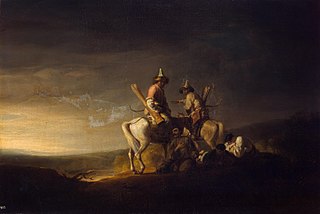 W
WBashkirs is a painting by William Allan, painted, signed and dated in 1814. The original title of the painting: "The Bashkirs, consorts sentenced to Siberia".
 W
WThe Bellelli Family, also known as Family Portrait, is an oil painting on canvas by Edgar Degas (1834–1917), painted c. 1858–1867, and housed in the Musée d'Orsay. A masterwork of Degas' youth, the painting is a portrait of his aunt, her husband, and their two young daughters.
 W
WA Boyar Wedding Feast was painted in 1883 by Russian artist Konstantin Makovsky (1839–1915). The painting shows a toast at a wedding feast following a boyar marriage, where the bride and the groom are expected to kiss each other. The bride looks sad and reluctant, while the elderly attendant standing behind her encourages the bride to kiss the groom. The work won a gold medal at the World's Fair held in Antwerp, Belgium in 1885, and is considered to be one of Makovsky's most popular works.
 W
WCapax Infiniti, or Capax Infiniti , is a 2014 mural by South African artist Faith47, painted on the side of the Carlyle Building, located at 1114 Southwest Washington Street, in downtown Portland, Oregon, in the United States.
 W
WThe Conspiracy of Claudius Civilis is an oil painting by the Dutch painter Rembrandt, c. 1661–62, which was originally the largest he ever painted, at about five by five metres in the shape of a lunette. The painting was commissioned by the Amsterdam city council for the Town Hall. After the work had been in place briefly, it was returned to Rembrandt, who may have never been paid. Rembrandt drastically cut down the painting to a quarter of the original size to be sold. It is the last secular history painting he finished.
 W
WDeath and Life is an oil on canvas painting by Austrian symbolist painter, Gustav Klimt whose primary subject was the female body. His paintings, murals, and sketches are marked by a sensual eroticism, which is especially apparent in his pencil drawings. The painting was started in 1908 and completed in 1915. It is created in an Art Nouveau (Modern) style by use of allegorical painting genre during Golden phase. The painting measures 178 by 198 centimeters and is now housed at the Leopold Museum in Vienna.
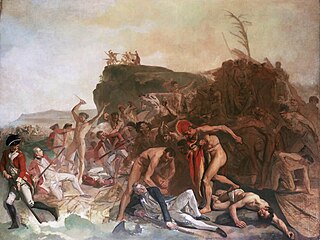 W
WThe Death of Captain James Cook, 14 February 1779 is a painting by Johann Zoffany. The painting records the loss of the British explorer Captain James Cook. The painting was completed in 1794 some years after the death of Cook in 1779. Other paintings of the death of Cook were painted earlier. The Mahiole that was included in the painting of Cook's death by Zoffany is said to be the helmet given to Cook when he first landed in Hawaii.
 W
WDeath of Dragut is an oil painting by the Maltese artist Giuseppe Calì, from 1867. It depicts the death of the Ottoman general Dragut during the Great Siege of Malta in 1565.
 W
WDick Brewer, Billy the Kid and the Regulators is a painting by artist Andrew "Andy" Thomas that depicts the Regulators as they hunt down William Morton and Frank Baker for the murder of businessman John Tunstall. This painting was sold at the Midwest Gathering of Artists in Carthage, Missouri on September 11, 2010.
 W
WThe Doctor is an 1891 painting by Luke Fildes that depicts a Victorian doctor observing the critical stage in a child's illness while the parents gaze on helplessly from the periphery. It has been used to portray the values of the ideal physician and the inadequacies of the medical profession. Different theories exist as to the painting's origin but it is most likely based upon Fildes' own experience of the death of his son. Critics have noted that Fildes omitted common medical equipment of his era in order to focus on the relationship between physician and patient.
 W
WDos Cabezas is a painting created by American artist Jean-Michel Basquiat (1960–1988) in 1982. The double portrait resulted from Basquiat's first formal meeting with his idol, American pop artist Andy Warhol.
 W
WThe Founding Ceremony of the Nation is a 1953 oil painting by Chinese artist Dong Xiwen. It depicts Chairman Mao Zedong and other Communist officials inaugurating the People's Republic of China at Tiananmen Square on October 1, 1949. A prominent example of socialist realism, it is one of the most celebrated works of official Chinese art. The painting was repeatedly revised, and a replica painting made to accommodate further changes, as the leaders it depicted fell from power and later were rehabilitated.
 W
WFreedom from Fear is the last of the well-known Four Freedoms oil paintings produced by the American artist Norman Rockwell. The series was based on the four goals known as the Four Freedoms, which were enunciated by President Franklin D. Roosevelt in his State of the Union Address on January 6, 1941. This work was published in the March 13, 1943, issue of The Saturday Evening Post alongside an essay by a prominent thinker of the day, Stephen Vincent Benét. The painting is generally described as depicting American children being tucked into bed by their parents while the Blitz rages across the Atlantic in Great Britain.
 W
WGrand Master Philippe Villiers de l'Isle Adam Taking Possession of Mdina is a painting by the French artist Antoine de Favray from c. 1750. It depicts Philippe Villiers de L'Isle-Adam, a Grand Master of the Knights Hospitaller, entering the city of Mdina and taking possession of it in a ceremony known as the possesso. The real-life event which is the subject of the painting took place on 13 November 1530, shortly after the establishment of Hospitaller rule in Malta. The painting is an iconic representation of Hospitaller Malta, and it is located within the Grandmaster's Palace in Valletta, Malta.
 W
WThe Hand of the Violinist is a 1912 painting by Italian Futurist Giacomo Balla, depicting a musician's hand and the neck of a violin "made to look like it's vibrating through space"—blurred and duplicated to suggest the motion of frenetic playing. The painting, representative of Futurism's first wave, exhibits techniques of Divisionism.
 W
WHappy Brothers, Their Poor Mother! is an 1887 oil painting by the Serbian artist Uroš Predić. It shows four intoxicated youths walking through their village whilst the mother of one shouts her disapproval from the distance. The painting is said to have been inspired by a frequent sight in Predić's home village of Orlovat—that of drunken youths returning from the pub at dawn. Predić painted the composition hoping it would persuade the villagers to change their ways. He was disappointed that it not only failed to decrease the incidence of drunkenness in Orlovat, but was well received by the villagers themselves, who were happy merely to have been depicted.
 W
WHead III is an oil painting by Francis Bacon, one of series of works made in 1949 for his first one-man exhibition at the Hanover Gallery, in London. As with the other six paintings in the series, it focuses on the disembodied head of male figure, who looks out with a penetrating gaze, but is fixed against an isolating, flat, nondescript background, while also enfolded by hazy horizontal foreground curtain-like folds which seems to function like a surrounding cage.
 W
WThe Hippopotamus and Crocodile Hunt is an oil painting on canvas by Peter Paul Rubens. It was commissioned in 1615 to decorate Schleißheim Palace, along with three other works depicting lion, wolf, and boar hunts. The cycle of paintings were looted from the palace during the Napoleonic Wars. Only the Hippopotamus and Crocodile Hunt was returned to Munich, at which time it was added to the collection that is now the Alte Pinakothek.
 W
WHugh Hope (1782–1822) was a civil servant for the East India Company and the third son of Sir Archibald Hope, 9th Baronet Hope of Craighall. A portrait of Hugh Hope, painted by Sir Henry Raeburn (1756–1823), currently hangs in The Cleveland Museum of Art.
 W
WThe Lament for Icarus is a painting by Herbert James Draper, showing the dead Icarus, surrounded by lamenting nymphs. The wings of Icarus are based on the bird-of-paradise pattern. In 1898, the painting was bought from the Royal Academy exhibition through The Chantrey Bequest, a public fund for purchasing modern art bequeathed by Sir Francis Leggatt Chantrey, R.A.. The Lament for Icarus was subsequently awarded the gold medal at the Exposition Universelle of 1900 in Paris.
 W
WLithuanian Girl with Palm Sunday Fronds is an 1844 oil on canvas painting by the Polish-Lithuanian artist Kanuty Rusiecki in the Lithuanian Art Museum.
 W
WLove and Pain is an 1895 painting by Edvard Munch; it has also been called Vampire, though not by Munch. The painting depicts a man and woman embracing, with the woman appearing to be either kissing or biting the man on his neck. Munch would go on to paint six different versions of the same subject between 1893 and 1895. Three versions are in the collection of the Munch Museum in Oslo, one is held by the Gothenburg Museum of Art, one is owned by a private collector, and the final work is unaccounted for. Munch painted several additional versions and derivatives of the work later in his career.
 W
WLow Marks Again is a painting by Fyodor Pavlovich Reshetnikov, created in 1952.
 W
WLuxembourg Gardens, Paris is an oil painting by Albert Edelfelt completed in 1887 of a scene in the Jardin du Luxembourg in Paris, France. The painting has become a kind of symbol of Edelfelt and the whole of Finnish art, at a time when Paris was the center of the whole art world. The work is also a larger Edelfelt paintings and a major en plein air painting.
 W
WThe Murder of Andreas Baader is a 1978 painting by the Norwegian artist Odd Nerdrum. It depicts the speculative murder of Andreas Baader, one of the leaders of the terrorist organisation Red Army Faction, in the Stammheim Prison in 1977.
 W
WNighthawks is a 1942 oil on canvas painting by Edward Hopper that portrays people in a downtown diner late at night as viewed through the diner's large glass window. The light coming from the diner illuminates a darkened and deserted urban streetscape.
 W
WOregon History, sometimes called the Oregon Historical Society mural, is an eight-story tall 1989–1990 trompe-l'œil mural by Richard Haas, installed outside the Oregon Historical Society and Sovereign Hotel in Portland, Oregon, in the United States.
 W
WThe Painting of the Six Kings is a fresco found on the wall of Qasr Amra, a desert castle of the Umayyad Caliphate located in modern-day Jordan. It depicts six rulers standing in two rows of three. Four of the six have inscriptions in Arabic and Greek identifying them as the Byzantine emperor, King Roderic of Hispania, the Sasanian emperor, and the Negus of Aksum. The painting, now substantially damaged, is thought to be from between 710 and 750, commissioned by the Umayyad caliph or someone in his family. It is one of the most famous frescoes in the Qasr Amra complex.
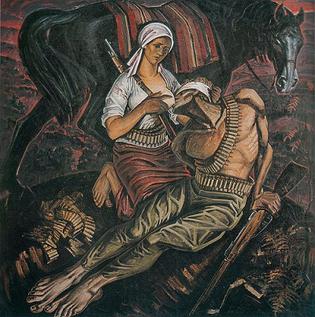 W
WPartisan Ballad is a painting by Belarusian artist Mai Dantsig showing a partisan woman breastfeeding a weary partisan man during World War II. Both are equipped with rifles and ammunition belts. Dantsig borrowed the Roman Charity theme, having seen the eponymous painting by Peter Paul Rubens in the Hermitage Museum. Partisan Ballad alludes to the German occupation of the Soviet Union on the Eastern Front of World War II when Belarusian SSR became the haven of Soviet partisans.
 W
WPartisan Madonna of Minsk is a painting by Belarusian artist Mikhail Savitsky, completed in 1978 and preceded by similar painting, Partisan Madonna from 1967. The painting is based on the Sistine Madonna by Raphael Sanzio and reflects the motherhood and milieu of Soviet partisans during World War II. The painting is regarded by art critics as one of the best Belarusian paintings of the 20th century. Partisan Madonna of Minsk is housed in the Belarusian National Arts Museum in Minsk.
 W
WPeasant Girl, spinning is the title given by nineteenth century American expatriate artist Elihu Vedder to an oil painting on canvas that depicts a young female figure spinning wool into thread. The work was completed in 1867 at the artist's studio in Via Margutta, Rome, and represents a slightly scaled up, slightly elaborated version of a theme Vedder had first developed in an oil sketch during the summer of the same year.
 W
WThe Potato Harvest is an 1855 painting by the French artist Jean-François Millet.
 W
WThe Proclamation of Dušan's Law Codex is the name given to each of seven versions of a composition painted by Paja Jovanović which depict Dušan the Mighty introducing Serbia's earliest surviving law codex to his subjects in Skopje in 1349. The Royal Serbian Government commissioned the first version for 30,000 dinars in 1899, intending for it to be displayed at the following year's Exposition Universelle in Paris.
 W
WReligious Procession in Kursk Governorate is a large oil on canvas painting by the Russian realist painter and sculptor Ilya Repin (1844–1930). Completed between 1880 and 1883, the work shows a seething, huddled mass attending the annual religious procession (crucession) carrying the famous icon Our Lady of Kursk from its home at the Korennaya Monastery to the nearby city of Kursk in western Russia.
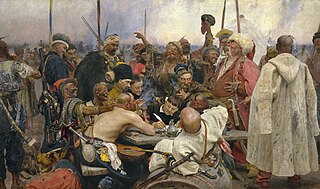 W
WReply of the Zaporozhian Cossacks to Sultan Mehmed IV of the Ottoman Empire, also known as Cossacks of Saporog Are Drafting a Manifesto, is a painting by Russian and Ukrainian artist Ilya Repin. The 2.03 m (6 foot 7 inch) by 3.58 m (11 foot 9 inch) canvas was started in 1880 and finished in 1891. Repin recorded the years of work along the lower edge of the canvas. Alexander III bought the painting for 35,000 rubles, at the time the greatest sum ever paid for a Russian painting. Since then, the canvas has been exhibited in the State Russian Museum in Saint Petersburg.
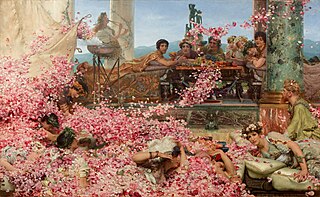 W
WThe Roses of Heliogabalus is an 1888 painting by the Anglo-Dutch artist Sir Lawrence Alma-Tadema depicting the young Roman emperor Elagabalus hosting a banquet.
 W
WThe Reverend Robert Walker Skating on Duddingston Loch, better known by its shorter title The Skating Minister, is an oil painting attributed to Henry Raeburn in the Scottish National Gallery in Edinburgh. It was practically unknown until about 1949, but has since become one of Scotland's best-known paintings. It is considered an icon of Scottish culture, painted during one of the most remarkable periods in the country's history, the Scottish Enlightenment.
 W
WThe Sower, created in 1907, is an oil on canvas painting by the Slovene Impressionist painter and musician Ivan Grohar. It is an image of a peasant sowing seeds on a ploughed field in an early and foggy morning. A hayrack, typical of the Slovene landscape, stands in the back, and even farther, the rocks of the small hill Kamnitnik near Škofja Loka. It has been a metaphor for the 19th-century myth of Slovenes as a vigorous nation in front of an unclear destiny, a symbol for the Slovene nation that sows in order that it could harvest, and a depiction of human interrelatedness with the nature. It is also a reflection of the context of Slovene transition from a rural to an urban culture. It has become one of the most characteristic and established Slovene creations in visual arts. It has been used by the IRWIN art group as well as the Semenarna Ljubljana seed company, and is depicted on the Slovenian 5 cent euro coin.
 W
WThe Takovo Uprising is the title of two nearly identical oil paintings by the Serbian realist Paja Jovanović. They depict rebel leader Miloš Obrenović inciting his countrymen against the Ottoman Empire and initiating the Second Serbian Uprising.
 W
WThe Tub is a pastel artwork by Edgar Degas (1834–1917), painted in 1886, and housed in the Musée d'Orsay in Paris. A masterwork of Degas, it skillfully combines still life of toilet articles with a distorted perspective and plunging view, make this pastel one of the most audacious and accomplished of Degas' works.
 W
WThe Three Ages of Woman is a painting that was completed in Austria in 1905 by Gustav Klimt, symbolist painter and one of the most prominent members of the Vienna Secession movement.
 W
WThree Studies of Muriel Belcher is an oil on canvas triptych painting by the Irish born English artist Francis Bacon, completed in 1966. It portrays Muriel Belcher, described by musician George Melly as a "benevolent witch", and the charismatic founder and proprietress of The Colony Room Club, a private drinking house at 41 Dean Street, Soho, London, where Bacon was a regular throughout the late 1940s to late 1960s. The two became friends soon after she opened the club in 1948, and Bacon helped her cultivate its reputation as a seedy but convivial meeting place for artists, writers, musicians, homosexuals and bohemians. At its height, regular patrons included Lucian Freud, Jeffrey Bernard, John Deakin and Henrietta Moraes.
 W
WThe Travelling Companions is an 1862 oil-on-canvas painting by British artist Augustus Leopold Egg.
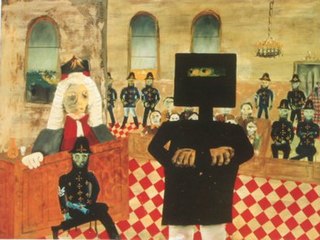 W
WThe Trial (1947) is a painting by the Australian painter Sidney Nolan.
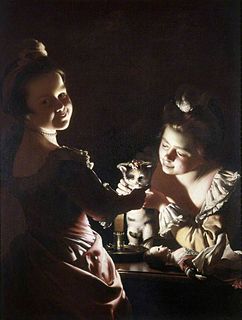 W
WTwo Girls Dressing a Kitten by Candlelight is a "fancy painting" by Joseph Wright of Derby (1734–1797). The painting is currently on display at the Kenwood House Public Museum, located in the London Hampstead area.
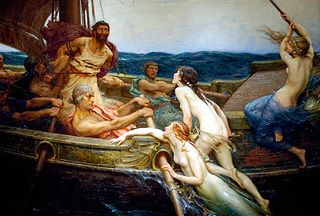 W
WUlysses and the Sirens is a 1909 oil painting by Herbert James Draper measuring 69.25 × 84 in. It is held at the Ferens Art Gallery in Kingston upon Hull, England. The gallery purchased the painting from Draper in 1910 for £600. Draper also painted a reduced replica that is housed at the Leeds Art Gallery. The subject of the painting is an episode in the epic poem Odyssey by Homer in which Ulysses is tormented by the voices of Sirens, although there are only two Sirens in Homer's poem and they stay in a meadow. The painting depicts Ulysses tied to the mast and forcibly attendant to the Sirens' seductions. Although the Sirens were depicted in ancient Greek art as scary, ugly creatures, Draper maintains the spirit but not the content of the story by transferring the Sirens' seductiveness from their song to a visible form, depicting the Sirens as beautiful mermaids who invade Ulysses' ship. The Sirens are nude and their tails disappear as they board the ship. Draper's conflation of Sirens with mermaids and his sexualization of these figures are consistent with other artwork of the Victorian and Edwardian eras. Norwegian social theorist Jon Elster used the name of Draper's painting as the title for his 1979 book about rationality and precommitment.
 W
WVenus and Mars is an Italian Renaissance painting by Paolo Veronese.
 W
WLady handing a coin to a Servant-Girl is an oil on canvas painting by the Dutch painter Pieter de Hooch. It is an example of Dutch Golden Age painting and is now in a private collection.
 W
WWomen Making History in Portland, sometimes abbreviated as Women Making History, is a 2007 mural by Robin Corbo, located in north Portland, Oregon, in the United States.
 W
WWoodstock Mural is a mural designed by artist Mike Lawrence, painted on the west side of the New Seasons Market store in the Woodstock neighborhood of Portland, Oregon, in the United States. The painting has three sections, each representing a theme: commerce, education, and the outdoors. It depicts figures adorned with symbolism related to characters in Greek mythology, including Hermes, Athena, and Demeter, along with local businesses and local landmarks such as the neighborhood farmers' market, Grand Central Bakery, Portland Fish Market, Woodstock Park, and the Woodstock Library.
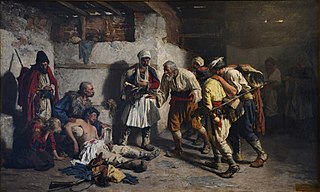 W
WThe Wounded Montenegrin is the title of four nearly identical compositions by the artist Paja Jovanović depicting a wounded youth surrounded by peasants in traditional clothing, likely during the Montenegrin–Ottoman War of 1876–78.
 W
WThe Wrestlers is a 1905 oil painting by George Luks held at the Museum of Fine Arts, Boston in Massachusetts, United States. The Wrestlers is Luks' best-known work. The painting depicts two nude men wrestling. He painted it in order to shock members of the Pennsylvania Academy of the Fine Arts whom he called "pink-and-white idiots". The Wrestlers was displayed at the 1908 Ashcan School exhibition. A 1910 article in New York World about the Exhibition of Independent Artists included an image of Luks' The Wrestlers despite the fact that the painting did not appear in that exhibition. In a 1908 diary entry, painter John French Sloan writes that The Wrestlers is among the best paintings he ever encountered. In 1992, art critic Carol Clark identified The Wrestlers as one of Luks' best works, calling it "raw, roughly painted" and reflective of Luks' experiences in New York. In 1996, Allen Guttmann compared Luks' The Wrestlers to Thomas Eakins' Wrestlers and Max Slevogt's Wrestling School, writing that all three paintings depict pairs of nude wrestling men lying on the ground in grappling holds. In the 2009 Dictionary of Modern and Contemporary Art, Ian Chilvers and John Glaves-Smith write that The Wrestlers emulates the "bravura painterly technique of artists such as Manet".